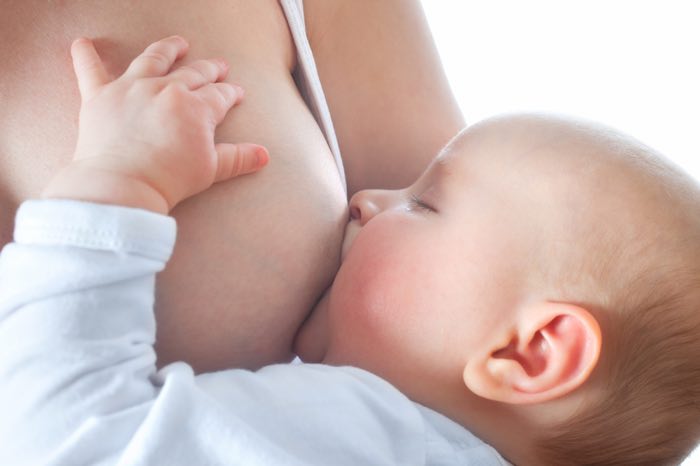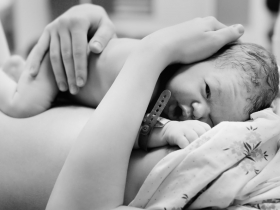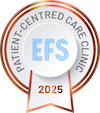Newborn Care and Preparation for It
You can never be 100% prepared for the arrival of a new addition to the family. Like any adult, a newborn baby is an individual who reacts to the world and the environment in their own way. The parents will find out what this reaction will be like after arriving from the hospital. Nevertheless, it is possible to take a number of steps that will make it easier for the baby to adapt from the safety of the mother's uterus to the new environment. It is recommended to start preparations in the first and second trimesters, because in the third trimester and especially just before the birth, future mothers need to rest a lot and the fathers to be available to them. How to prepare for the arrival of the baby and what is the care of a newborn?
Preparation of an ideal environment for a newborn
The first weeks after birth are very demanding for both parents and the newborn. Everyone has to get used to a new situation, parents to a new lifestyle and a baby to a new environment. That is why it pays to adapt the home so that it is comfortable and safe for everyone, and to buy a sufficient supply of all the things that the baby will need in advance. All this will make it easier for you to transition to a new life routine.
Expectant parents will be prepared for the preparation of the newborn's room together with the changing corner, its requisites and storage space so that everything is at hand. Then choose a cot, stroller, baby clothes and other essentials. Choosing clothes for the newborn is a fun activity that seduces parents after confirming their pregnancy to buy all sorts of cute outfits with ruffles or multi-piece sets. In fact, after the birth of a child, only a few pieces are needed, which should be mainly functional and make it easier to change the baby. For a start, it is important to have a sufficient supply of pyjamas and bodysuits, because the newborn will spend most of their time in these during their first weeks of life.
It is also important to consider the time of year in which your offspring was born. You will need less clothes for the summer, while children born in the winter need warm clothes, including gloves and hats. It pays to bet on clothes made of organic fabrics and 100% natural fibres, which are gentle on the sensitive skin of the newborn. This also applies to all other fabrics that the child comes into contact with. It is ideal to use gentle detergents to prepare linen, towels, sheets and other things.
How to approach sensitive baby skin?
The baby has very sensitive skin after birth, and therefore it is necessary to pay special attention to it. As with detergents, it is important to choose products designed for sensitive skin or directly for newborns. Postpartum children commonly have skin problems such as miliaria, dermatitis, neonatal acne and other problems and they usually disappear on their own within a few weeks. Other skin problems, such as eczema or sores, should be lubricated with special creams. If the problem persists, see a paediatrician who will advise you on the most appropriate treatment.
After birth, the skin of the newborn is protected by a so-called coating, which is an oily protective layer that gradually peels off. This is a natural process and no creams need to be used. Under no circumstances should peeling skin be mechanically removed or the skin scrubbed. It is also not necessary to bathe the baby every day, just wash the face, neck, hands, buttocks and genitals with a damp cloth or a moist wet wipe. If it is time for a bath, it is advisable to prepare well. The bathroom should be heated to a comfortable temperature and you should have a nappy, pyjamas, bath towel and other things ready you might need during and after the bath. Initially, it is enough to wash the baby with warm water without soap and shampoo, which could irritate their skin. After the bath, dry the baby carefully and wrap it in a heated towel or bath towel.
Choosing suitable nappies is also important for healthy baby skin. It is important that they are made of a fine non-irritating material, absorb moisture quickly and are breathable. The baby's skin thus stays dry and breathes, which reduces the risk of sores, rash and eczema. The ergonomic shape, which protects sensitive skin, is also important.

Breastfeeding for baby's health and for a happy life
Substances that contain breast milk are key to the proper development of the baby. In addition, each mother's body creates nutrients and vitamins just for the baby. When breastfeeding, it is important to choose the right technique. The basis is a comfortable position for mother and child, where the baby lies on their side and their face, torso and legs face their mother. It is important to hold the baby to the breast and not the other way around, and the nipple should be at the same level as the newborn's mouth. The baby must then attach not only to the nipple, but also to part of the areola so that its nose touches the breast.
In the first weeks of life, the baby should be breastfed at least once every four hours and even more often if the baby requires it. It is also not necessary to limit breastfeeding in any way as long as the baby has a taste, is hungry and is drinking. Newborns are breastfed not only during the day, but also at night at the same intervals. If a woman has more milk than the child is able to drink, the milk can be squirted out by hand or with a suction pump to get rid of the excess milk. Breast milk can be stored for twenty - four hours in the refrigerator or seventy - two hours in the freezer. During the first weeks, it is not recommended to use baby bottles and pacifiers, which can impair proper breastfeeding technique.






